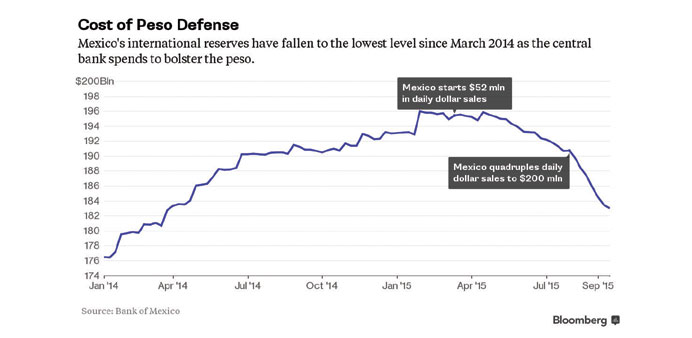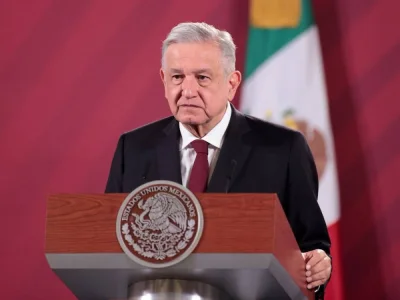Bloomberg
Mexico City
To Wall Street’s biggest banks, Mexico has little choice but to keep intervening in the foreign-exchange market.
That’s because failing to extend its dollar sales beyond Wednesday’s expiration could exacerbate swings in a currency that has already posted its biggest slide since 2008, according to analysts at banks from JPMorgan Chase & Co to Bank of America Corp.
Mexico has been selling the US currency to curb the peso’s slump since a swoon in emerging markets and in oil prices accelerated in December.
That’s helped pare the country’s international reserves to $183bn, the lowest since March 2014. Still, discontinuing intervention now would risk deepening a rout that has the peso hovering near a record low, said Marco Oviedo, chief Mexico economist at Barclays in Mexico City.
“The peso can depreciate in a more violent manner,” he said.
For foreign investors in Mexico’s local bonds, a more pronounced selloff in the peso threatens to swell losses. The debt has slumped 12% in dollars this year, compared with a 3.5% drop for emerging markets.
The press offices of Mexico’s Finance Ministry and central bank declined to comment on a possible extension of the intervention.
Central bank Governor Agustin Carstens said in an interview with Radio Red on Tuesday that while intervention is adding liquidity and should be continued, the currency commission that will decide the programme’s fate has yet to meet.
The group includes Carstens, Finance Minister Luis Videgaray and four other officials from the central bank and treasury.
While the peso has tumbled 13% this year and touched an intraday record low of 17.3425 per dollar last week, Mexico’s annual inflation rate has dropped. The monthly reading reached its lowest level in almost a half century in August, falling to 2.59%.
The peso fell 0.8% to 17.0014 per dollar in New York on Friday. JPMorgan and Bank of America expected Mexico would announce an extension of its intervention programme when the central bank kept its key interest rate unchanged at a record low 3% on Monday. In July, Mexico announced an increase in dollar sales when policy makers held their rate-setting meeting.
The central bank currently sells $200mn in dollars each day and holds a supplemental auction, also for $200mn, whenever the peso weakens more than 1% in a given trading session.
An extension of the programme would cost about $5bn a month, according to Grupo Financiero Banorte.
“This is an important issue for them,” said Bank of America chief Mexico economist Carlos Capistran, who expects the intervention will be extended. “There’s a lot of uncertainty in financial markets.”



